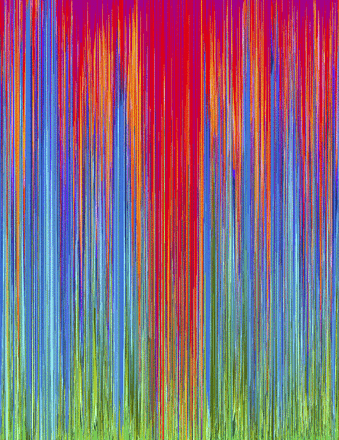Check out the May issue of GENETICS by looking at the highlights or the full table of contents!
ISSUE HIGHLIGHTS
Bivariate analysis of age-related macular degeneration progression using genetic risk scores, pp. 119-133
Ying Ding, Yi Liu, Qi Yan, Lars G. Fritsche, Richard J. Cook, Traci Clemons, Rinki Ratnapriya, Michael L. Klein, Gonçalo R. Abecasis, Anand Swaroop, Emily Y. Chew, Daniel E. Weeks, and Wei Chen
Ding et al. used data from large clinical trials to evaluate the effects of known age-related macular generation (AMD) risk variants on disease progression. They used these variants to develop a genetic risk score (GRS) for use in prediction models. GRS was significantly associated with AMD progression, and the addition of this new measure improved the prediction performance of a demographic and environmental model. A model using AMD severity, age, education level, smoking status, and the GRS satisfactorily predicted AMD progression.
Rapid adaptation of a polygenic trait after a sudden environmental shift, pp. 389-406
Kavita Jain and Wolfgang Stephan
Although many studies have shown that a population initially well adapted to its environment can evolve rapidly when conditions suddenly change, the dynamics of rapid adaptation are not well understood. Here a population genetic model of polygenic selection is analyzed to describe the short-term response of a quantitative trait after a sudden shift of the phenotypic optimum. Jain and Stephan show that subtle as well as drastic changes may occur in the allele frequency under certain conditions. Applications of the results for selective sweep mapping and adaptation tests are discussed.
Spiraling complexity: a test of the snowball effect in a computational model of RNA folding, pp. 377-388
Ata Kalirad and Ricardo B. R. Azevedo
The snowball hypothesis suggests that the number of genetic incompatibilities between two populations will accumulate faster than linearly as they diverge. Several studies have attempted to test this hypothesis, but have focused on its predictions, not on its underlying assumptions. Here the authors use a computational model of RNA folding to test both predictions and assumptions of the snowball hypothesis. Their RNA folding model supports the central prediction of the hypothesis of snowballing numbers of genetic incompatibilities, but challenges some of its underlying assumptions.
Germ granules prevent accumulation of somatic transcripts in the adult Caenorhabditis elegans germline, pp. 163-178
Andrew Kekupa’a Knutson, Thea Egelhofer, Andreas Rechtsteiner, and Susan Strome
Germ granules are widely conserved, germ-cell-specific, ribonucleo protein organelles. In C. elegans, germ granules (P granules) are necessary for fertility and prevent germ cells from expressing somatic fate markers. Here, the authors use RNA-seq and single molecule FISH to show that P-granule-depleted germ cells accumulate numerous sperm and soma-specific transcripts, including transcripts from numerous neuronal genes, and lose germ cell identity. Losing either of two critical P-granule components, PGL-1 or GLH-1, is sufficient to cause germ toward-soma reprogramming.
Extrinsic repair of injured dendrites as a paradigm for regeneration by fusion in Caenorhabditis elegans, pp. 215-230
Meital Oren-Suissa, Tamar Gattegno,1 Veronika Kravtsov, and Benjamin Podbilewicz
Neurons in the CNS have limited regenerative ability. Genetic pathways have been identified for axonal regeneration, but few studies exist on dendrites. This study shows that when the dendrites of particular C. elegans neurons are injured by laser microsurgery, the broken dendrites often regenerate. The dendrites occur in an arborized pattern of menorah-like structures, which undergo branch sprouting, lose self-avoidance and auto-fuse to bypass the injury site. Branch pruning and arbor simplification completes regeneration. When auto-fusion fails the distal arbor degenerates.
Coordination of double strand break repair and meiotic progression in yeast by a Mek1-Ndt80 negative feedback loop, pp. 497-512
Evelyn Prugar, Cameron Burnett, Xiangyu Chen, and Nancy M. Hollingsworth
Meiotic crossovers and double strand breaks (DSBs) are required for gametogenesis, but entering meiotic divisions with broken chromosomes results in inviable gametes. This paper shows the critical coordination of meiotic progression with DSB repair occurs through negative feedback between the meiosis-specific Mek1 kinase and Ndt80 transcription factor. When DSB levels are high, Mek1 inactivates Ndt80. As DSBs are repaired, Mek1 levels decrease and Ndt80 activates, resulting in disassembly of the meiotic chromosome structure required for Mek1 activity and safe procession to Meiosis I.
Comparative analyses of selection operating on nontranslated intergenic regions of diverse bacterial species, pp. 363-376
Harry A. Thorpe, Sion C. Bayliss, Laurence D. Hurst, and Edward J. Feil
To date, the existing very large genome sequence datasets of many bacterial species have not been exploited to quantify the strength and direction of selection operating on intergenic regions. This study notes strong purifying selection acting on intergenic elements in six diverse species, particularly on ribosome binding sites and non-coding RNAs, but also on intergenic sequences that do not correspond to known elements. Mycobacterium tuberculosis promoters are under strong positive selection, underlining the key role of regulatory changes as an adaptive mechanism in this species.
A pooled sequencing approach identifies a candidate meiotic driver in Drosophila, pp. 451-465
Kevin H.-C. Wei, Hemakumar M. Reddy, Chandramouli Rathnam, Jimin Lee, Deanna Lin, Shuqing Ji, James M. Mason, Andrew G. Clark, and Daniel A. Barbash
Mendel’s Law of equal segregation states that each of the two alleles in a diploid organism has an equal probability of being transmitted into a haploid gamete, ensuring that in a heterozygote the two alleles will be transmitted in a 50:50 ratio. Rare exceptions to this law occur through meiotic drive. The authors describe a new method to detect meiotic drive by sequencing large pools of backcrossed progeny and use it to detect a candidate meiotic driver.































